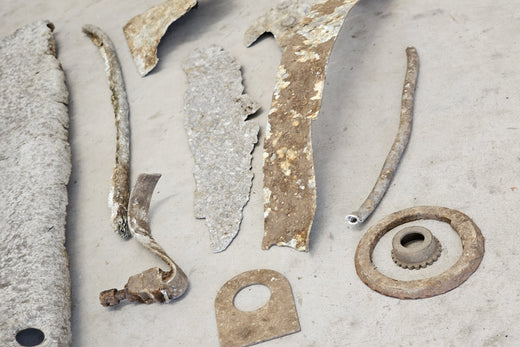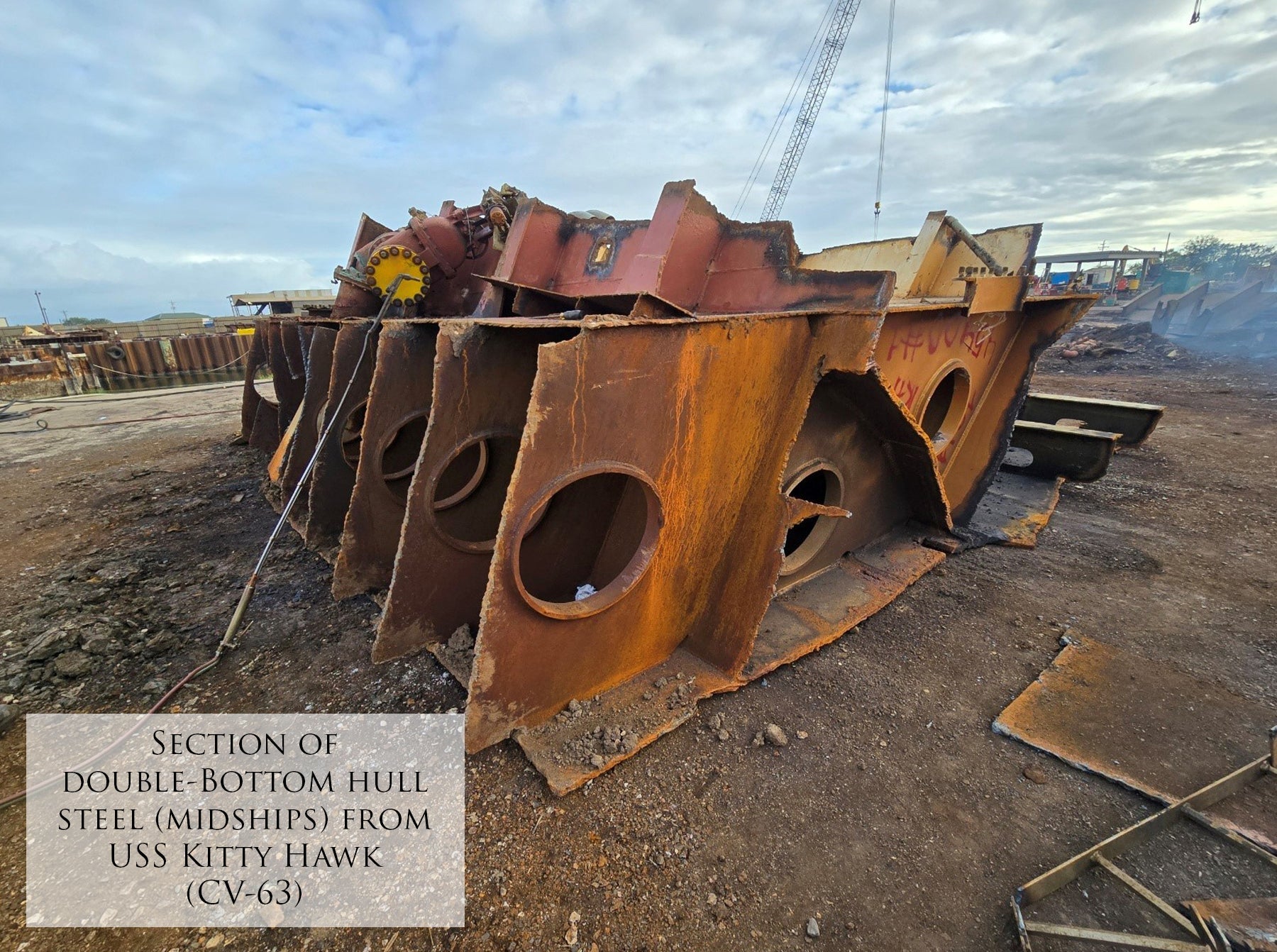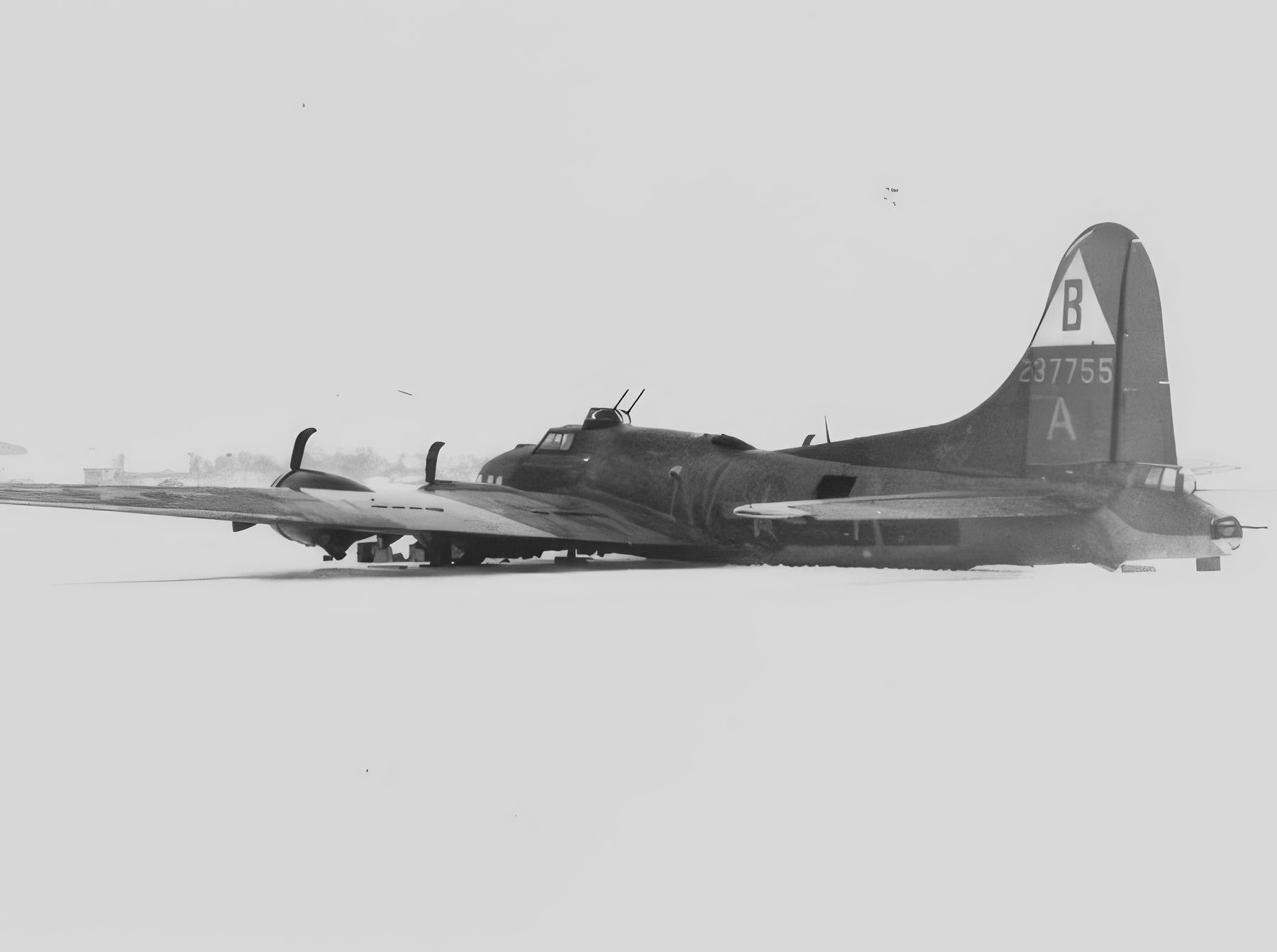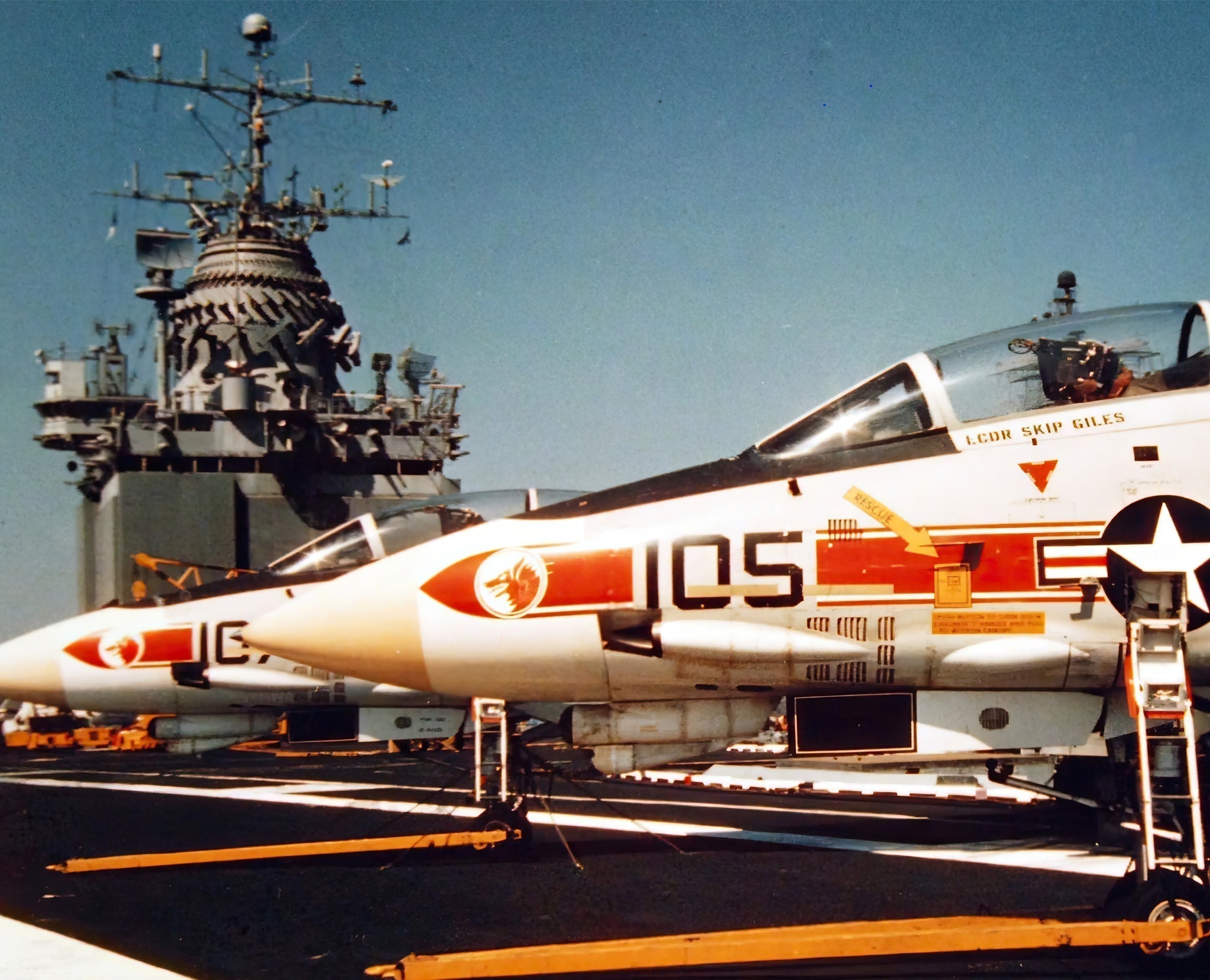This Fine Art Print by Artist Craig Tinder honors the crew of B-24H Liberator 41-28731 and the bomber crews of 392nd Bombardment Group (Heavy) from the United States Mighty 8th Air Force. This extremely rare, Limited Edition canvas print includes an original remnant of fuselage from B-24H Liberator s/n 41-28731.
 B-24 Liberator fuselage and engine fragments
B-24 Liberator fuselage and engine fragments
Details About the RELIC:
These aluminum remnants come from the B-24H-10-DT 41-28731, a bomber from the 392nd Bomb Group that was tragically lost during a formation practice mission on 5 July 1944. The aircraft was involved in a mid-air collision near the village of Foxley, Norfolk, England.
 Crash site of B-24H-10-DT 41-28731
Crash site of B-24H-10-DT 41-28731
On the day of the incident, the 392nd Bomb Group participated in a large-scale practice mission, involving multiple combat wings. The goal was to improve formation flying and bombing accuracy, as new crews and element leaders honed their skills for combat. The planes were to simulate a bombing run over the Suttonbridge airfield, flying at an altitude of 14,500 feet. 41-28731 was one of 36 planes from the 392nd Bomb Group taking part in this exercise.
The relics include fragments of outer aluminum and engine components and were recovered in 2004.
 Ground dug relics from B-24H-10-DT 41-28731
Ground dug relics from B-24H-10-DT 41-28731
The Story Behind the Print:
Before joining the 392nd Bomb Group, B-24H-10-DT 41-28731, named Picadilly Lilly served with the 467th Bombardment Group, known as the "Rackheath Aggies," flying out of RAF Rackheath, England. One notable mission occurred on 31 May 1944, when 491 B-24 Liberators from various bomb groups, including the 467th, took off to target critical rail infrastructure in France and Belgium. Despite meticulous planning and early morning preparations, this mission did not go as planned.
Radio Operator Anthony V. Bell of the 467th Bomb Group vividly recounted the experience. "Got up at 0330. Briefing at 0430. Today we had 2,000 lb. bombs for the first time! Boy, what monsters. Took off on time and formed OK and took off on course at about 10:00. There is nothing beautiful about War, so I thought. But today I saw a spectacle I know very few eyes have seen. Beautiful white billowing clouds, 25,000 feet hight! The biggest thing in the world, I'm sure! We had to come back without hitting the target. We couldn't get over the clouds. It was like flying in canyons! And what a canyon! Big enough for 1,000 airplanes to fly through. That's all for today --- Day off tomorrow."
Bell described the clouds as a surreal and awe-inspiring sight, a rare moment of beauty amidst the ugliness of war. "It was like flying in canyons," he noted in his log, the clouds forming massive, towering formations through which hundreds of bombers navigated. While no bombs were dropped, the mission left an indelible impression on those who flew it, a reminder that even in the chaos of war, nature could present moments of breathtaking wonder.
The 467th Bomb Group, operating from RAF Rackheath, played a significant role in the air war over Europe. Known for their expertise with the B-24 Liberator, the group flew a total of 212 missions, completing 5,538 sorties during their service. Their contribution to the Allied bombing campaign was critical, helping to weaken Nazi supply lines and support ground operations in France and beyond. Picadilly Lillie was just one of many aircraft that helped the 467th build its impressive combat record before the plane was later transferred to the 392nd Bomb Group.
 Consolidated B-24 Liberators of the 467th Bombardment Group
Consolidated B-24 Liberators of the 467th Bombardment Group
Learn more about The B-24 Liberator’s ‘Flying Coffin’ Nickname Explained Danger in the Skies? Click Here
To purchase or see similar items, visit here.
Commissioned by Museums, Treasured by Collectors





Share:
Training Legends, the story behind "Sunrise Kaydet"
The People's Fighter, the story behind "Contested Victory"